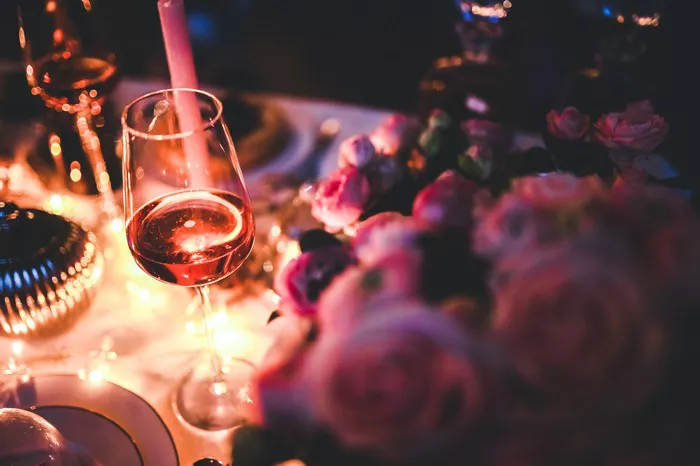The world of wine is as vast and diverse as the vineyards that produce it, with each bottle telling a story of terroir, craftsmanship, and flavor. Among the myriad choices available, Sauvignon Blanc stands out as a popular and refreshing option loved by wine enthusiasts around the globe. With its crisp acidity, vibrant aromas, and ability to complement a variety of dishes, Sauvignon Blanc has become a staple on wine lists and dining tables alike. However, as with any culinary delight, it’s important to be mindful of the caloric content in your glass. In this article, we’ll delve into the intriguing question: “How many calories are there in one bottle of Sauvignon Blanc?” Let’s uncork this conundrum and explore the caloric landscape of this beloved white wine.
The Complexity of Caloric Content
Before we dive into the specifics of Sauvignon Blanc, it’s important to understand the broader concept of caloric content in wine. Wine is a complex beverage that contains a combination of water, alcohol, sugar, acids, and other compounds. As such, its caloric content is influenced by multiple factors, including the grape variety, production methods, residual sugar, and alcohol by volume (ABV).
Understanding Sauvignon Blanc
Sauvignon Blanc, renowned for its zesty and aromatic profile, hails from various wine regions across the world. From the grassy hills of New Zealand to the classic vineyards of Bordeaux, Sauvignon Blanc grapes showcase a range of flavors that can include citrus, tropical fruits, green apple, and even herbaceous notes.
Calories in One Bottle of Sauvignon Blanc
The caloric content of Sauvignon Blanc can vary based on several factors, but one of the primary determinants is the wine’s alcohol by volume (ABV). ABV refers to the percentage of alcohol present in the wine, and it directly affects the wine’s overall caloric content. On average, one gram of alcohol contains approximately 7 calories, while carbohydrates (such as sugars) contribute about 4 calories per gram.
1. ABV and Caloric Content
Most Sauvignon Blanc wines have an ABV ranging from 11% to 14%. Let’s break down the caloric content based on different ABV percentages:
11% ABV: A 5-ounce (147 ml) glass of Sauvignon Blanc with 11% ABV contains approximately 85-90 calories.
12% ABV: A 5-ounce (147 ml) glass of Sauvignon Blanc with 12% ABV contains around 90-95 calories.
13% ABV: A 5-ounce (147 ml) glass of Sauvignon Blanc with 13% ABV has about 95-100 calories.
14% ABV: A 5-ounce (147 ml) glass of Sauvignon Blanc with 14% ABV contains roughly 100-105 calories.
2. Residual Sugar
The presence of residual sugar in wine can also contribute to its caloric content. Residual sugar refers to the natural sugars that remain in the wine after fermentation is complete. These sugars can come from the grapes themselves or be intentionally added during the winemaking process. Wines with higher residual sugar levels may have slightly more calories than those with lower levels of sugar.
3. Serving Size Matters
When discussing caloric content, it’s essential to consider the serving size. The standard serving size for wine is 5 ounces (147 ml). However, wine glasses can vary in size, and some individuals may pour larger portions. Keep in mind that consuming larger servings will result in higher calorie intake.
4. Total Calories in a Bottle
Now, let’s extrapolate the caloric content to an entire bottle of Sauvignon Blanc. A standard wine bottle contains 750 ml, which is equivalent to approximately five 5-ounce servings. Using the ABV ranges mentioned earlier, we can estimate the total caloric content in one bottle of Sauvignon Blanc:
11% ABV: A bottle of Sauvignon Blanc with 11% ABV contains approximately 425-450 calories.
12% ABV: A bottle of Sauvignon Blanc with 12% ABV contains around 450-475 calories.
13% ABV: A bottle of Sauvignon Blanc with 13% ABV has about 475-500 calories.
14% ABV: A bottle of Sauvignon Blanc with 14% ABV contains roughly 500-525 calories.
Health Considerations and Moderation
As with any aspect of diet and nutrition, moderation is key. While enjoying a glass of Sauvignon Blanc can be a delightful experience, it’s important to be mindful of your overall caloric intake, especially if you’re watching your weight or have specific health goals. Here are a few points to consider:
1. Nutritional Value
While wine contributes calories to your diet, it doesn’t offer significant nutritional value. Unlike whole foods that provide essential nutrients, wine is devoid of vitamins, minerals, and other beneficial compounds.
2. Balance and Variety
If you choose to include wine in your diet, do so in moderation and ensure that you’re consuming a balanced and varied range of foods. Prioritize whole foods that provide essential nutrients to support your overall well-being.
3. Impact on Blood Sugar
Wines with higher residual sugar content may have a more pronounced effect on blood sugar levels, which is important to consider, especially for individuals with diabetes or those monitoring their sugar intake.
4. Hydration
Alcohol can have a dehydrating effect on the body. It’s crucial to stay hydrated by drinking water alongside your wine consumption, especially after a workout or physical activity.
5. Individual Variation
Individual responses to alcohol can vary based on factors such as genetics, metabolism, and overall health. It’s important to listen to your body and make choices that align with your personal well-being.
Conclusion
In the enchanting world of wine, Sauvignon Blanc shines as a crisp and invigorating choice. When it comes to the caloric content in one bottle of Sauvignon Blanc, the numbers can vary based on factors such as ABV and residual sugar. While enjoying a glass of this beloved white wine can be a delightful experience, it’s essential to approach it with mindfulness and moderation. By understanding the caloric landscape of Sauvignon Blanc and making informed choices, you can savor its flavors while prioritizing your health and wellness. Remember that the true beauty of wine lies not only in its taste but in the moments and conversations it inspires—a reminder to sip and savor each experience, one glass at a time.


